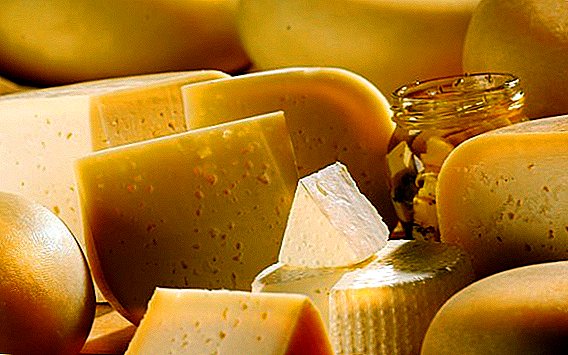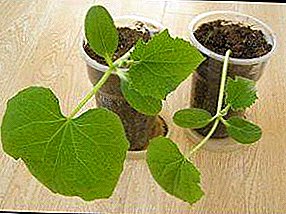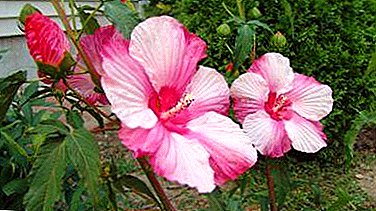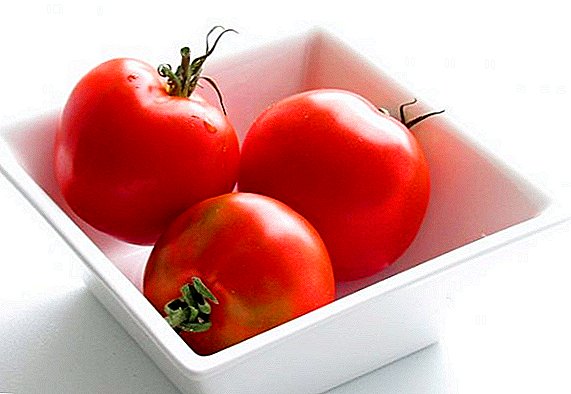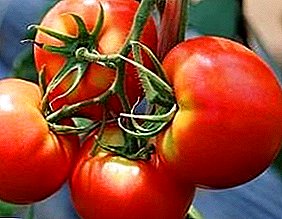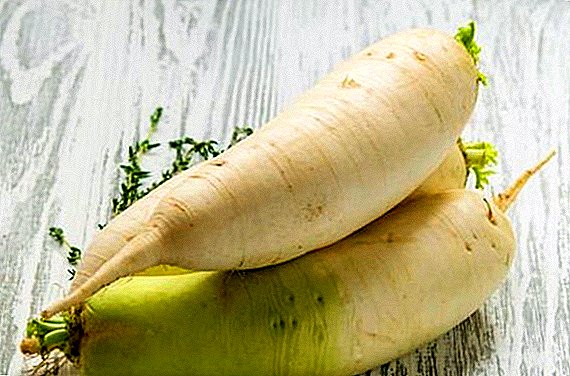 In the autumn-winter period, when the body is particularly acutely deficient in vitamins and microelements, one of the ways to maintain good health is to eat fruits and vegetables regularly. We suggest you to pay attention to the radish of the "daikon" variety - this root vegetable comes from Japan, where for many centuries it has been a regular guest on the table. From this article, you will learn how many vitamins, microelements and other beneficial substances this white root conceals.
In the autumn-winter period, when the body is particularly acutely deficient in vitamins and microelements, one of the ways to maintain good health is to eat fruits and vegetables regularly. We suggest you to pay attention to the radish of the "daikon" variety - this root vegetable comes from Japan, where for many centuries it has been a regular guest on the table. From this article, you will learn how many vitamins, microelements and other beneficial substances this white root conceals.
Composition and nutritional value
Let's take a closer look at what nutrients this amazing vegetable keeps in itself:
- Vitamins: A, B1, B2, B5, B6, B9, C, PP.
- Minerals: iron, calcium, potassium, iodine, phosphorus, zinc and others.
- Cellulose.
- Amino acids.
- Enzymes
- Pectin.
- Lysozyme
- Isorodic acid.
- Phytoncides and antioxidants.
As you can see, daikon radish has an extremely rich composition of vitamins and minerals, but at the same time this root crop has a very low calorie content - 21 kcal per 100 g. 
Did you know? This vegetable culture was known in ancient Greece. Already at that time, the Greeks knew about the tasty and healthy properties of radish. It was decided to pay for it with gold coins, and it was served only in rich houses on gilded dishes.
Useful properties of daikon
White radish is a real storehouse of valuable vitamins and microelements. Let's find out in more detail what kind of effect white radish has on the body from the inside.
General benefits
Regularly eating dishes with daikon, you will soon notice how it benefits the whole body:
- cleansing the kidneys and liver, which is an excellent prevention of urolithiasis at any age;
- removal of toxins and toxins - the vegetable is full of fiber, stimulating the gastrointestinal tract, thereby cleansing the body;
Rutabaga, figs, pumpkin honey, amaranth, horseradish, plum, home fern, Tibetan lofant and flax oil are also used to remove their body toxins.
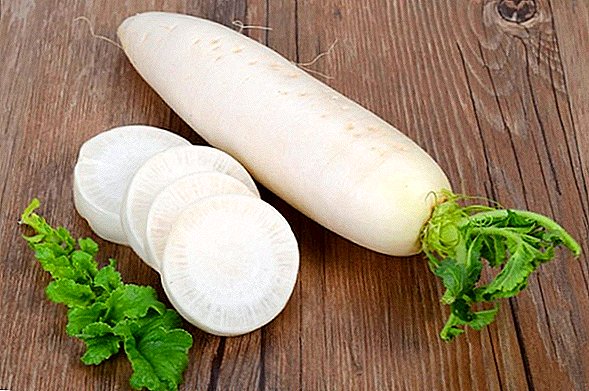
- antimicrobial action. Vitamins, phytoncides and proteins present in the composition of this vegetable destroy pathogenic microflora in the human body. Regular use of daikon, especially during the cold season, helps strengthen the immune system and is an excellent means of prevention against viral diseases;
- stimulates sputum discharge in the presence of respiratory diseases - bronchitis, pharyngitis, asthma;
- calming effect - the juice of radish daikon helps to improve the functioning of the nervous system, which makes it an indispensable aid in the fight against frequent stresses;
- prevention of diabetes mellitus - radish helps reduce blood sugar levels, in addition, it contains fructose, which is necessary for people with diabetes;
- prevention of cardiovascular, oncological diseases;
- healthy hair and skin.
Important! After you have eaten daikon, it is undesirable to immediately start dairy dishes - the simultaneous use of these products leads to an increased load on the stomach.

What is useful for women
A large amount of folic acid is also found in foods such as black radish, green beans, broccoli, spinach, peas, Brussels sprouts, beets, celery, corn, flax seeds, strawberries, papaya, peanuts and almonds.It should be noted that vitamin B9 (folic acid) is indispensable for the normalization of the menstrual cycle and the blood formation process in the female body. Women planning to become pregnant should increase the use of foods with a high content of folic acid.
What is useful for men
Men should also pay attention to this amazing vegetable. Protein, which is part of radish daikon, promotes muscle growth - this will be very useful for athletes and lovers of physical activity.  It should be noted another important property of this root - with regular use of daikon enhances male libido and increases potency. An excellent reason to eat radish daikon salad for dinner, isn't it?
It should be noted another important property of this root - with regular use of daikon enhances male libido and increases potency. An excellent reason to eat radish daikon salad for dinner, isn't it?
Use of daikon
Most often, this vegetable is used raw - in salads or as an independent dish. However, a great number of recipes are known, in which daikon is stewed, pickled, fried and even boiled. It is also added to pastries and dried for later use in dishes as a seasoning.
In folk medicine
In folk medicine, the root of white radish is very popular.
We have prepared for you some simple cooking recipes with white radish, which have shown their effectiveness in treating many ailments:
- Baked radish against anemia. Ingredients (all vegetables are taken in equal parts): carrots - 1 pc; beets - 1 pc; Daikon - 1 pc. Wash vegetables under running water and rub on a large grater. Put the vegetable mass in a greased baking dish and put it in the oven.
 Bake for several hours on very low heat. Baked vegetables are taken before each meal and 1 tablespoon. This recipe can be used to treat anemia in children, only the dosage will decrease - 1 teaspoon before each meal. Remember that any treatment of anemia should last 2-3 months without interruption in taking medication.
Bake for several hours on very low heat. Baked vegetables are taken before each meal and 1 tablespoon. This recipe can be used to treat anemia in children, only the dosage will decrease - 1 teaspoon before each meal. Remember that any treatment of anemia should last 2-3 months without interruption in taking medication. - A prescription for the prevention and treatment of cardiovascular diseases. Ingredients: Daikon - 100 g, sugar - 1-2 tbsp. spoons. Rinse the root vegetable under running water. Grate it on a coarse grater. Sprinkle the grated mass with sugar and leave for some time - the vegetable should put juice. With gauze squeeze the juice and pour it into a glass dish. Store the juice in a refrigerator for up to 24 hours. Take 1 tablespoon of juice before each meal.
For the treatment of diseases of the cardiovascular system, they also use wolfberry, melon, mulberry, pine sap, hellebore, zyuznik, hawthorn, spawn, aconite, hazelnut and gumi berries.
- Recipe for improving immunity and cough treatment. Ingredients: Daikon radish juice - 50 g, honey - 1 tsp. Grate the radish on a large grater. Squeeze the juice from the resulting mass. Add honey to it. Take the cooked mixture in a tablespoon three times a day.

- The recipe for cleansing the body from accumulated toxins and toxins. Rinse the root vegetable under running water. Grate it on a coarse grater. Squeeze the juice from the resulting mass. Take 100-150 ml of healthy juice after every dinner.
- Radish smoothie for weight loss. Ingredients: radish - 1 pc., Cucumber - 1 pc., Parsley - 1 small bunch, spinach - 1 small bunch. Rinse the vegetables and herbs under running water. Cut them in small pieces and send them to the blender bowl. Grind to a state of thick cream. Drink the resulting cocktail of 1 glass every day.
In cosmetology
In addition to cleansing from the inside, white radish does an excellent job with external cleansing and skin whitening. In cosmetology, juice and grated pulp of this root are used. Depending on your skin type, you can add additional ingredients: aloe or cucumber juice for oily, sour cream for owners of dry or olive oil to further moisturize the skin of any type.
For cosmetic purposes, they also use beeswax, avocado oil, marigolds, rosemary, purslane, walnuts, savory, linden, nasturtium, bird cherry, nettle and lavender essential oil.
 To lighten the skin, you can wipe the face and décolleté with the juice of this root. This procedure should be done at bedtime after a thorough cleansing of the skin from traces of makeup and dirt. After some time after applying to the face, wash the juice with cool water and apply any cream selected according to your skin type.
To lighten the skin, you can wipe the face and décolleté with the juice of this root. This procedure should be done at bedtime after a thorough cleansing of the skin from traces of makeup and dirt. After some time after applying to the face, wash the juice with cool water and apply any cream selected according to your skin type.
In cooking
Recipes with radish daikon are very easy to prepare - having spent a minimum of effort, you will get very tasty dishes that will decorate your table. It is enough to grate radish, salt, add sour cream and - a dietary, but very tasty and healthy salad is ready for use.
We offer you three recipes for salads from this vegetable, which will definitely appeal to your household:
- Salad with chicken breast and white radish. You will need: daikon - 500 g, chicken breast - 350 g, eggs - 2 pcs., Cucumber - 1 pc., Sour cream - 2 tbsp. spoons, salt and pepper - to taste. Boil chicken breast and eggs. Rub a radish and a cucumber on a large grater. Cut into small pieces of eggs and meat. Stir all the ingredients, salt and pepper, pour sour cream before serving.
- Salad with zucchini and white radish. You will need: daikon - 250 g, young squash - 250 g, dill or parsley - a small bunch, garlic - clove, lemon juice - 1 tsp, olive oil - 5 tbsp. spoons, salt and pepper - to taste. Grate the radish and zucchini on a fine grater. Finely chop the greens and chop the garlic clove. Salt and pepper the salad. Mix olive oil and lemon juice and pour over your salad. Let it brew for 10-15 minutes and eat with pleasure.
- Salad of apples with white radish. You will need: daikon - 250 g, apple - 1 pc. medium size, sour cream - 2-3 tbsp. spoon, dill - a small bunch, salt - to taste. Rub the daikon on a medium grater, salt it, chop the apples into small cubes, they must first be peeled. Chop the greens and season the salad with sour cream. Enjoy your meal.
Daikon Damage
Acquaintance with this root crop should be started with small doses, gradually increasing portions. Despite its obvious benefits, daikon is rich in fiber, which can trigger indigestion, heartburn, and increased flatulence in the intestines.  Limiting the volume of portions of dishes with radish is also recommended for people with diseases or disorders of the gastrointestinal tract (gastritis, ulcers, colitis, pancreatitis).
Limiting the volume of portions of dishes with radish is also recommended for people with diseases or disorders of the gastrointestinal tract (gastritis, ulcers, colitis, pancreatitis).
Important! Pediatricians do not recommend white radish in the diet of children under three years of age. The abundance of fiber in this vegetable provokes indigestion. Familiarity with the new product start with one teaspoon.
Selection and storage
This is great if you managed to grow daikon in your garden - using vegetables in cooking various dishes, you will be sure that a high-quality product will get on the table for the household, without any additives or preservatives.
But do not worry if you have to buy daikon in the supermarket or in the grocery market. The most important rule for choosing a quality product is that there should be no damages and stains on the root.  One of the unique properties of the radish of the daikon variety is that it withstands long-term storage, while the amount of useful substances practically does not decrease, and the amount of vitamin C, on the contrary, increases.
One of the unique properties of the radish of the daikon variety is that it withstands long-term storage, while the amount of useful substances practically does not decrease, and the amount of vitamin C, on the contrary, increases.
Here are some simple ways to store this vegetable:
- Fresh. For this fit a refrigerator or cellar. The main condition is coolness and lack of light. Experienced housewives advise you to pack the root in a plastic bag and in some places make small holes for air. In this form daikon can be stored for up to six months.
- Frozen. Before freezing the vegetable should be prepared - rinse under running water, remove the tops and chop the radish. This can be done using a float or cut into small cubes. After that, place the chopped vegetable in the freezer. There are no special requirements for capacity - both a plastic bag and a special capacity for freezing will do. In this form daikon can be stored for a year. Just remember that you should not re-freeze the product.
- In canned form. In order to always have a useful juice at hand, you can preserve it.
Check out the tips on growing daikon.
 This is a very simple process:
This is a very simple process:- prepare glass jars and lids for preservation;
- sterilize them over steam or in the oven;
- squeeze the juice from the radish using a juicer;
- pour the juice into sterilized jars and spin them;
- leave stored in a dark and cool place.
Did you know? Many recipes for side dishes for meat in addition to the root itself includes in its composition and tops. Most often, it is fried in vegetable oil before use.Now you know how useful a vegetable called daikon is. Having met him on the counter in the store, do not pass by, because from it you can cook delicious, and most importantly - very healthy dishes that will help strengthen your health, which is important at any time of the year.



 Bake for several hours on very low heat. Baked vegetables are taken before each meal and 1 tablespoon. This recipe can be used to treat anemia in children, only the dosage will decrease - 1 teaspoon before each meal. Remember that any treatment of anemia should last 2-3 months without interruption in taking medication.
Bake for several hours on very low heat. Baked vegetables are taken before each meal and 1 tablespoon. This recipe can be used to treat anemia in children, only the dosage will decrease - 1 teaspoon before each meal. Remember that any treatment of anemia should last 2-3 months without interruption in taking medication.
